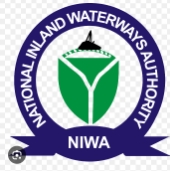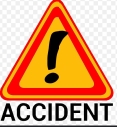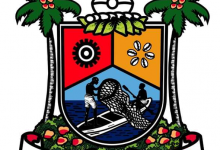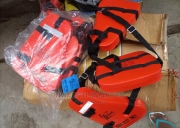
NIWA reduces deaths on waterways by 72% in 2025
By Adebayo Adedeji
CITIZENS COMPASS—When former Osun State Commissioner for Finance, Asiwaju Munirudeen Bola Oyebamiji (AMBO), was appointed Managing Director and Chief Executive Officer of the National Inland Waterways Authority (NIWA) in October 2023, his mandate was clear: to fully implement the Water Transportation Code to reduce boat accidents and standardise water transport in Nigeria. Since then, his leadership has delivered measurable results. In just three years, fatalities on Nigeria’s waterways have dropped from 330 in 2022 to only 92 in the first eight months of 2025.
The Water Transport Code, otherwise known as the Inland Waterways Transportation Regulations 2023, was launched in April 2024 by the Minister of Marine and Blue Economy, Alhaji Adegboyega Oyetola, for effective enforcement of waterway operations.
At the launch at NIWA headquarters in Lokoja, Kogi State, Kogi State Governor, Alhaji Usman Ododo, praised President Bola Tinubu for appointing Oyebamiji. “When we were coming here, our people asked where we were going. I told them it was a NIWA event. They asked, ‘Which one is NIWA?’ This shows that until now, many people hardly knew about NIWA. But today, everyone knows because the President appointed the right person who is making an impact,” he said.
The governor’s excitement stemmed from NIWA’s impressive new facilities and Oyebamiji’s detailed presentation of the agency’s roadmap.
During the event, NIWA commissioned 15 new boats for surveillance, enforcement, and emergency response. These include: 3 surveillance boats to improve security visibility, 5 enforcement boats to ensure compliance with safety regulations, 1 combat-ready gun patrol boat (115 horsepower) for rapid security response, 1 modern 62-seater passenger boat, piloted as a safer replacement for wooden canoes, and 3 fully equipped water ambulances for emergencies. Two hydrographic survey boats with multi-beam echo sounders, providing detailed seafloor mapping, were also supplied. NIWA also distributed hundreds of life-jackets on the same day.
Since introducing this new equipment, the operations and services of NIWA have improved tremendously, leading to significant reduction in accidents and fatalities.
Before Oyebamiji’s tenure, industry reports from the Marine Crafts Builders Association of Nigeria (MCBAN) recorded an average of 330 deaths annually in 2021 and 2022. By 2024, other industry stakeholders, Ships and Ports news reported a reduction to 231. Most recently, Punch (September 2, 2025) reported 92 deaths between January and August 2025, representing a 60% drop from 2024 and a 72% decline compared with 2001/2022 average.
According to Punch, “About 92 passengers reportedly lost their lives in boat accidents across Nigeria between January and August 2025….The accidents occurred in several states, including Rivers, Niger, Sokoto, Kwara and Zamfara.”
While every life is important and should not be lost carelessly as many fatalities on waterways often suggest, the 72% slide in 2025 is commendable. The available record of rescue operations conducted by NIWA and other rescue teams indicate increased equipment and better coordination have improved emergency response.
For instance, in May 2025, NIWA and the Nigerian Navy rescued 99 passengers following a boat collision on the Bukuma River, Rivers State. It is gladdening that all passengers were rescued without injuries or fatalities. Similarly in August 2025, NIWA rescued 104 passengers after a boat carrying 138 capsized on Kainji Lake. Life-jackets worn by passengers greatly aided their survival.
In Sokoto, NIWA divers and other rescue workers rescued over 40 passengers. And just a few days ago, another boat sank in Niger but with over 50 survivors, thanks to timely intervention of the NIWA team and its partners.
On the improvement of NIWA rescue operations, the Minister of State for Works, Mohammed Bello Goronyo, commended NIWA and the National Emergency Management Agency (NEMA) for their timely and coordinated responses.
Goronyo stated, “The rescue efforts in Sokoto demonstrate the importance of synergy between agencies. In the previous week, NIWA and NEMA were on-site even before other responders arrived, rescuing passengers and recovering victims. This level of dedication illustrates what can be achieved when we work together in unity.”
While commendation continues to pour in for NIWA over the progress, the agency must sustain and expand its safety measures to prevent future tragedies. The agency, and importantly too, the mother ministry, should see to the full implementation of the report of the Special Committee to End Boat Accidents in Nigeria, chaired by Oyebamiji and submitted two months ago. The committee, inaugurated February 2025, with 16 members of maritime safety experts, engineers, legal practitioners and researchers, had as part of its recommendations: enforcement of waterway safety regulations to prevent accidents, standardisation of permitted vessels types to improve safety, increased funding for NIWA to strengthen hydrographic and marine engineering functions and setting up of stations at strategic locations across inland waterways.
To further improve waterway safety, NIWA should extend the distribution of free life jackets to other states beyond the current 12 riverine states. The ongoing 42,000 free life-jackets, which ordinarily should have come at huge cost to boat operators and passengers, though laudable should be scaled up nationally. The agency should also increase the tempo of enforcement on wearing life jackets and maintain the “no-life-jacket-no-boarding” regulation. NIWA should increase the number of water marshals to adequately monitor the 3,000km navigable waterways, as the current 350 marshals are insufficient.
Launched in 2024 with just 80 officers, the NIWA’s water marshal unit has proven to be effective in controlling the activities of boat operators and passengers on jetties and waterways.
The agency should equally consider, as part of its corporate social responsibility (CSR), distributing boat spare parts to operators, leveraging its running partnership with Toyota/Yamaha company in Nigeria. Its drive to phase out commercial wooden boats on Nigeria’s waterways and replace them with fibre boats should be carried out vigorously and timely. And finally, NIWA should continue its advocacy and enlightenment programmes, which reportedly have reached no fewer than 400 communities by foot, aiming to reach more areas and promote waterway safety awareness in all homes.







